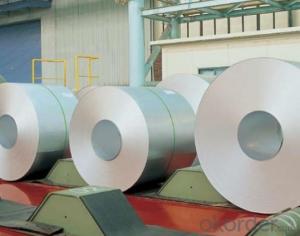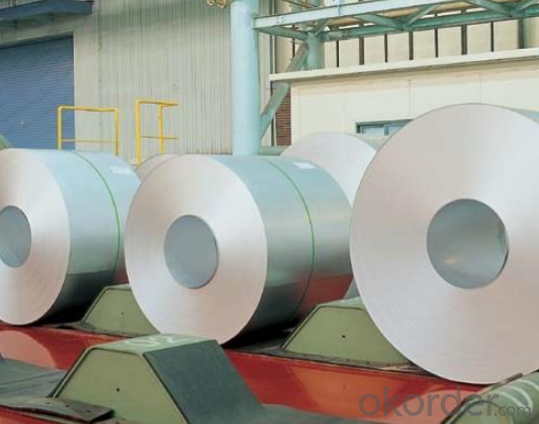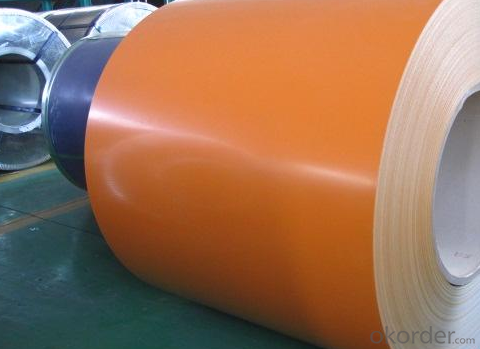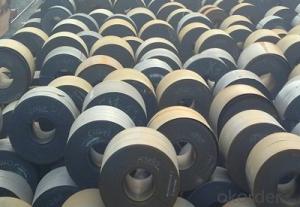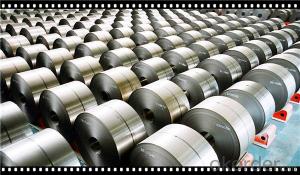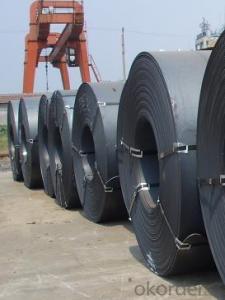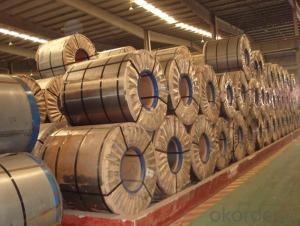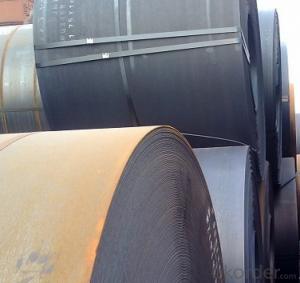Standard: DIN
Grade: DX56D+Z
Place of Origin: Tianjin, China (Mainland)
Type: Steel Coil
Surface Treatment: Galvanized
Application: Extra deep drawing
Width: 600-1534mm
Length: Coil
Galvanized Steel Coil Hold Rolled Extra High-strength CNBM
- Loading Port:
- Guangzhou
- Payment Terms:
- TT OR LC
- Min Order Qty:
- 20 m.t.
- Supply Capability:
- 3000 m.t./month
OKorder Service Pledge
OKorder Financial Service
You Might Also Like
1.Quick Details:
2.Packaging & Delivery
| Packaging Details: | standard package |
|---|---|
| Delivery Detail: | 1-4 week |
cold rolled galvanizing steel coil
galvanized iron steel coil
Thickness | 0.15mm--2.0mm |
Width | 50--1250mm |
Zinc Coating | 40gsm—275gsm |
Spangle | Big, small regular spangle and zero spangle |
Surface Treatment | Chromate, Galvanized, Skin Pass, Passivity and Oiled(un-oiled) |
ID | 508mm or 610mm |
Coil Weight | 3--7 Metric Tons and as requirements |
Production | 12,000 metric tons per month |
More information of Galvanized Steel Coils/GI/PPGI/HDG | |
Payment Term | T/T or L/C (We usually charge 30% of the deposit first.) |
Delivery Port | Qingdao Port or Tianjin Port |
Delivery Time | Within 20 days after receipt of T/T or L/C |
MOQ | 25 metric tons or one 20 feet container |
Application | General use, Color coating, Corrugated Roofing making, Outside of the buildings Structure, Deep Drawing and etc. |
Ambition | Reliable product, Competitive price, On-time delivery and High standard service. |
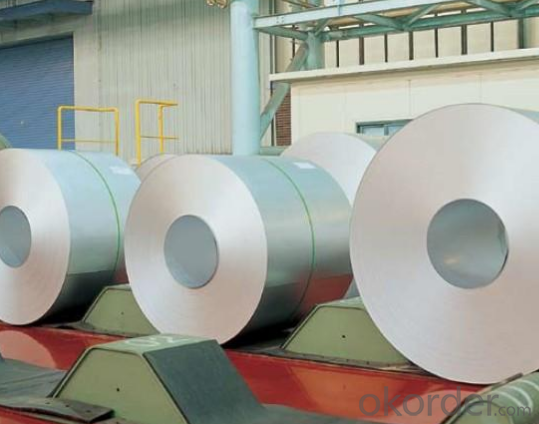
5.What is the application of Steel Coil?
There are two sides,one is out side: Workshop, agricultural warehouse, residential precast unit, corrugated roof, roller shutter door, rainwater drainage pipe, retailer booth;the other is inside: Door, doorcase, light steel roof structure, folding screen, elevator, stairway, vent gutter.
- Q: How are steel coils processed and shaped into specific products?
- Steel coils are processed and shaped into specific products through a series of manufacturing steps. Initially, the coils are uncoiled and straightened to remove any bends or twists. Then, the steel is cut into desired lengths using shearing or slitting techniques. Next, the cut steel is shaped and formed through processes like rolling, bending, or stamping to achieve the desired shape. Additional operations such as welding, machining, or surface treatments may also be performed. Lastly, the finished products are inspected for quality and packaged for distribution.
- Q: What are the different methods of stretch leveling steel coils?
- There exists a variety of methods for stretch leveling steel coils, each possessing their own unique advantages and applications. 1. Roller Leveling: This method entails passing the steel coil through a sequence of rollers that apply pressure to stretch and flatten the material. It is a widely utilized technique for leveling steel coils and grants excellent control over the leveling process. Roller leveling proves suitable for thin and medium gauge steel coils. 2. Tension Leveling: In this approach, high tension forces are applied to the steel coil via a set of bridle rolls. The tension aids in elongating and flattening the material, resulting in a level and stress-free coil. Tension leveling proves particularly effective for thicker and harder steel coils. 3. Laser Leveling: Laser technology is harnessed in this method to assess and rectify any imperfections present in the steel coil. A laser scanner diligently scans the surface of the coil and detects variations, which are subsequently adjusted by a laser beam. Laser leveling provides exceptional precision and is suitable for leveling delicate and high-value steel coils. 4. Stretcher Leveling: This method involves exceeding the yield point of the steel coil, leading to permanent deformation and the elimination of residual stresses. Stretcher leveling is commonly employed for heavy gauge coils and is capable of achieving substantial improvements in flatness. 5. Tensionless Leveling: As the name implies, tensionless leveling is executed without the application of tension to the steel coil. Instead, hydraulic or pneumatic pressure is employed to stretch and flatten the material. This method is ideal for delicate or sensitive steel coils that may be susceptible to damage under high tension forces. Each method of stretch leveling steel coils possesses its own set of advantages, such as control, precision, or suitability for specific types of steel coils. The selection of the appropriate method relies on factors such as the thickness, hardness, and quality requirements of the steel coil, as well as the desired flatness and surface finish.
- Q: How do steel coils contribute to durability and longevity in products?
- Steel coils contribute to durability and longevity in products due to their inherent strength and resistance to corrosion. By using steel coils as a material, products benefit from enhanced structural integrity and the ability to withstand heavy loads, mechanical stress, and harsh environmental conditions. The flexibility and resilience of steel coils also ensure that products can maintain their shape and functionality over a prolonged period, making them highly durable and long-lasting.
- Q: What is the minimum diameter of a steel coil?
- The minimum diameter of a steel coil can vary depending on the specific requirements and manufacturing processes, but it is typically around 4 inches or 100 millimeters.
- Q: Two different shaving razors I'm looking to buy have different specs. in terms of the metals used for the blade; one being 1045 surgical stainless steel, the other 440 stainless (not sure if its A B or C, but probably 440A or 440B because it's not specified). So which one is better for the intended use as a shaving razor?
- Type 440 combines such a high grade of cutlery steel, toughness and economy that it is actually known as razor blade steel. Browsing around (a lot) more, it seems that 1045 Surgical Steel is popular in straight razors used by barbers. These razors are honed by stropping with leather and last practically forever. From the above, I would guess that it might be easier to lose the edge on 1045, but also easier to re-sharpen it, that it won't easily knick because probably not so hard as 440. I'm not sure if it would be more expensive, unless it has a superior handle etc. So, I would expect to spend a little more effort over the lifetime of the 1045, maybe pay a little more for it, but have a longer lifetime. hth.
- Q: Can steel coils be bent or shaped?
- Yes, steel coils can be bent or shaped. Steel coils are highly flexible and can undergo various bending and shaping processes to achieve desired forms and configurations.
- Q: How are steel coils stored and transported?
- Steel coils are typically stored in warehouses or outdoor storage yards. They are usually stacked horizontally, one on top of the other, with wooden or steel supports placed between each coil to prevent damage. When it comes to transportation, steel coils are usually loaded onto flatbed trucks or shipping containers using cranes or forklifts. It is important to secure the coils properly during transportation to prevent any shifting or damage.
- Q: What is the average flatness tolerance for steel coils?
- The average flatness tolerance for steel coils typically ranges between 0.25% and 0.5% of the coil's width.
- Q: I just bought a dpms ar15 and it says if I shoot steel cases (laquer coated) or foreign ammo it voids the warranty. But before I knew this I bought 200 rounds of Russian steel cased anmo. Think I should just shoot there two hundred and not buy anymore? Some people say all they shoot is steel cased ammo and have no problemAny advice is appreciated
- steel case does not cause additional wear to the gun's chamber when compared to brass case. many tests has been done and precise measurements taken, this myth has been proven false. lacquer coating can cause issues because it can melt and cool, and cause jams. this is easily remedied with a chamber brush and some solvent.. However, steel jacket causes problems. Steel is harder than copper, it does not deform as easily so it causes more wear to the barrel as compared to copper or brass. The rate is around 10-25%, inreasing if you hoot rapidly instead of slowly. more shooting = hotter barrel = faster wear. It's the same with copper/brass jackets, but steel jacketed always wears more than softer metals. TulAmmo (or tula) is particular is so cheaply made they don't have enough copper/brass wash on the bullet to survive firing, after a few inches of travel it's steel on steel contact in the bore and it can ruin a gun barrel very quickly. But... there is one exception. if your gun comes with a chrome-lined bore that is standard for most AR's , shoot all the cheap junk you can buy. chrome-lined steel is 2X as hard as plain steel. crappy tula .223 will not cause more harm to a chrome-lined bore more than brass or copper jacketed bullets.
- Q: Corten steel tends to overheat in hot environments? (for example copper heats up under the sun)
- Weathering steel, best-known under the trademark COR-TEN steel and sometimes written without the hyphen as Corten steel, is a group of steel alloys which were developed to obviate the need for painting, and form a stable rust-like appearance if exposed to the weather for several years. Overheating ? It's not possible for a metal to get hotter than it's environment unless there is a source of radiation. The sun shining on a metal will heat up a bit, as will any material, but the amount is small and depends on the surface reflectivity. Define what you mean by overheating. .
Send your message to us
Galvanized Steel Coil Hold Rolled Extra High-strength CNBM
- Loading Port:
- Guangzhou
- Payment Terms:
- TT OR LC
- Min Order Qty:
- 20 m.t.
- Supply Capability:
- 3000 m.t./month
OKorder Service Pledge
OKorder Financial Service
Similar products
Hot products
Hot Searches
Related keywords
